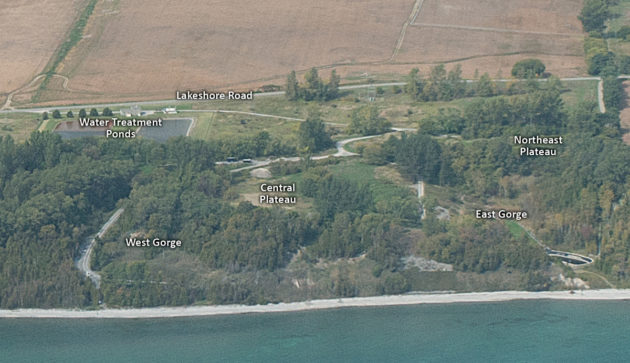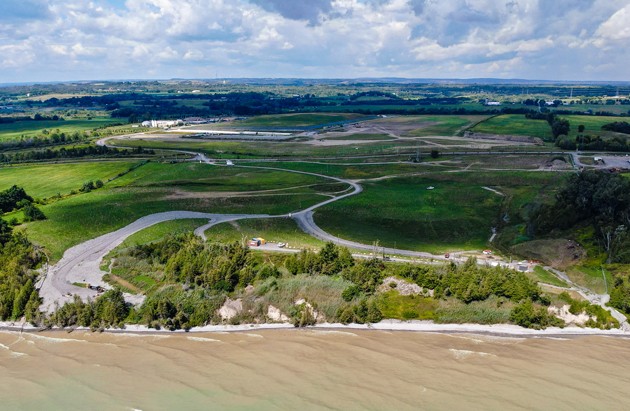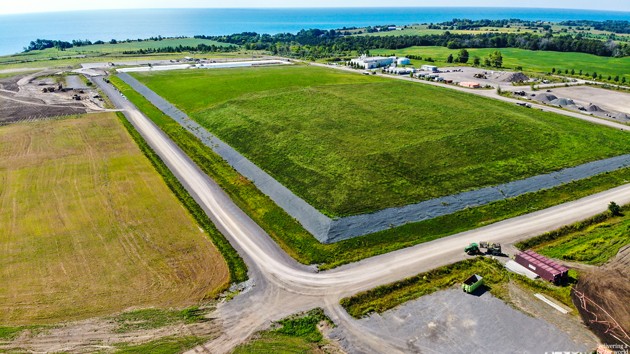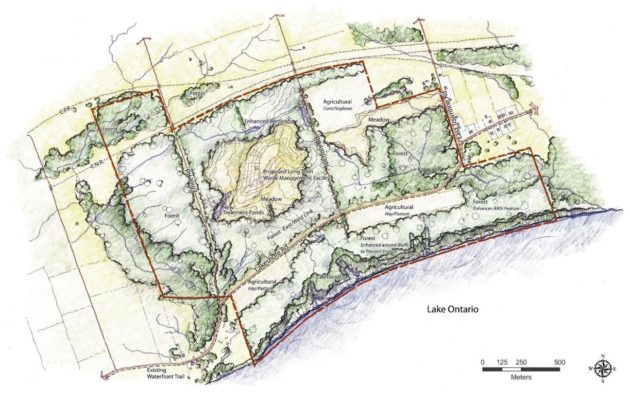The project included construction of an engineered aboveground mound to isolate the waste from the environment, a dedicated waste water treatment plant, and supporting infrastructure.
The Port Granby Project is regulated through a Waste Nuclear Substance Licence issued to Canadian Nuclear Laboratories by the Canadian Nuclear Safety Commission. Under this licence, strict site safety, security, radiation protection, environmental protection, as well as occupational health and safety protocols are in place to minimize risks to the public, workers and the environment.
Nature of the Waste
The former Port Granby waste management site was a 17-hectare area located on the northern shoreline of Lake Ontario in the southeast corner of the Municipality of Clarington. Historic low-level radioactive waste was deposited at the site between 1955 and 1988 by the former Crown Corporation, Eldorado Nuclear Limited, which operated in Port Hope.
Eldorado’s uranium refining processes at the Port Hope plant site changed over time and the Port Granby site received a variety of chemical wastes – primarily neutralized raffinate and calcium fluoride – industrial refuse and contaminated soils during its 33 years of operation. The waste was buried throughout the site, in the East and West Gorges, and in 76 trenches located in the flatter areas above the East Gorge and in the Central Plateau.
 Port Granby Legacy Waste Management Site – 2012 (pre-remediation)
Port Granby Legacy Waste Management Site – 2012 (pre-remediation)Remediation and Long-Term Storage Complete
Between 2016 and 2020 approximately 1.3 million tonnes of historic low-level radioactive waste and marginally contaminated soil was excavated from the former Port Granby waste management site and relocated to an engineered aboveground mound at the Port Granby Long-Term Waste Management Facility (LTWMF) constructed 700 metres northwest of the current site. Waste was transported via an internal haul road through a temporary underpass below Lakeshore Road along a dedicated access road to the facility.
 In November 2020, CNL announced the completion of remediation at the former site.
In November 2020, CNL announced the completion of remediation at the former site.In September 2021 CNL marked the completion of capping and closing the aboveground storage mound at the LTWMF. The mound has been built to resemble a drumlin or hill, which is in alignment with the wishes of the local community that the mound should blend in with its surrounding environment. Final layers are in place over both cells and the entire mound is covered with clean fill and grass.
 Dedicated systems installed within and around the perimeter of the mound will monitor its performance for hundreds of years into the future.
Dedicated systems installed within and around the perimeter of the mound will monitor its performance for hundreds of years into the future.After the Port Granby Project is complete
With community input, the Municipality of Clarington has developed a naturalized landscape end-use concept for both the surplus lands near the long-term waste management facility and the restored, former site.
The Government of Canada is reviewing a proposal for a nature reserve on the federal lands surrounding the facilities in consultation with local First Nations.

